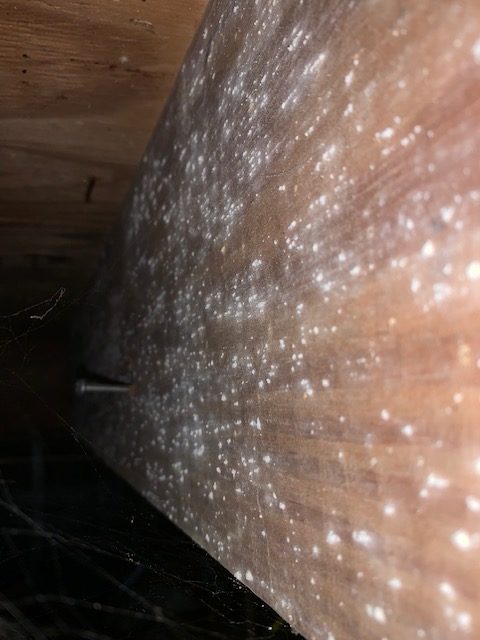The last few weeks have reminded us that the spring rainfall is coming. During a recent air quality inspection of a crawlspace, it was discovered that there was water sitting on top of the vapor barrier. The puddles were within a few feet of the HVAC unit/air handler that was located in the crawlspace. It appeared that this had happened recently, but it seemed quite obvious that this wasn’t the first time.
Of all the places for puddles, this is one of the worst. Humidity is the enemy of every crawlspace and the air from that crawlspace is promptly taken through the air handler, and pushed through the air ducts. When the heat or air conditioning turns on, that air is delivered into the living space of the home. That musty odor is a a good indicator that there is high humidity – an opportunity for mold growth.
Three Easy Crawlspace Observations
There are a few things that we can do to make sure the crawlspace air quality is healthy. First, perform a visual check of your floor joists and sub-floor. If there is “dust” or round circles of any color that appear on the wood, it may be mold. Below is a perfect example of a moldy floor joist.

Notice the powdery, circular growth on the floor joist. This is typically seen in crawlspaces that have elevated humidity levels over long periods of time.
Second, take a few moisture readings of floor joists and subfloor. There are a number of different moisture meters on the market today and almost any meter from your favorite “big box” retailer will work well. Below is a picture of a “pinless” moisture meter. In other words, it doesn’t have sharp edges that are pushed into the wood to determine the moisture level of the wood. It simply is situated on the surface. Here is a

This is an example of a pinless moisture meter. Typically, they are very good on wood surface readings, but are inadequate much past 1/4″. Here is a link to this particular meter.
Lastly, make sure there is no water collecting on the vapor barrier. The vapor barrier should cover any exposed bare ground in the crawlspace. If it doesn’t, correct the problem! Below is a picture of a crawlspace with a great vapor with water on top. Vapor barriers are supposed to keep water on the bottom side from rising (vapor) and damaging wood. This is a real problem!

Crawlspace with pooling water. Vapor barriers are to stop condensation from the ground. In this case, it is keeping the water from draining and the increased humidity will damage the floor joists.
If you have questions or concerns about your crawlspace, call a certified mold inspector about your space. Breathe Safe! Breathe Easy! Certified Inspectors of America is your air quality expert. Call (770) 533-3777 today.

